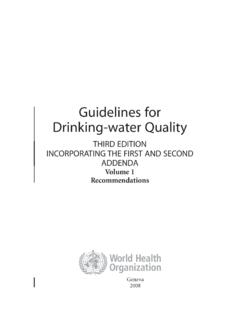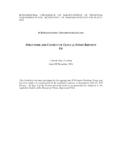Transcription of RDNS Active Service Model Evaluation Project …
1 RDNS Active Service Model Evaluation Project final report RDNS Home and Community Care Program, Active Service Model Implementation 2010-2013 Prepared by Deborah Manning, Project Officer RDNS Scott Phillips (Director Kershaw Phillips Consulting) July 2013 This Project was supported with funding under the HACC Program by the Commonwealth and Victorian Governments. Table of Contents Acknowledgements .. 1 List of abbreviations .. 2 1. Executive Summary .. 3 Scope and focus of the Evaluation .. 3 Strengths and weakness of the Evaluation design .. 3 Context of ASM program implementation at RDNS and across Victoria .. 4 Overview of findings .. 5 Conclusion .. 5 Recommendations .. 6 2. Introduction .. 10 RDNS Active Service Model Implementation .. 11 Project outcomes and objectives .. 11 Activities implemented .. 12 Stage of ASM implementation .. 15 Other studies of implementing similar approaches.
2 16 Evaluation Overview .. 18 Scope of the Evaluation .. 18 Limitations .. 19 Main Evaluation questions .. 20 3. Methodology .. 21 Data collection and analysis .. 21 Sampling methodology .. 22 Care record audit process, data recording and analysis .. 22 Case study review, data recording and analysis .. 23 Client profile data extraction, review and analysis .. 23 Staff focus group, recruitment, schedule and analysis .. 24 4. Evaluation results .. 25 General findings .. 25 ASM program uptake by Service users and staff .. 25 ASM Client Profile .. 26 Average length of stay .. 27 Detailed Findings .. 28 Translation of ASM principles into practice .. 28 Autonomy .. 29 Capacity building .. 30 Holistic view of peoples needs and care .. 32 Person centred care (flexible and responsive) .. 33 Working Collaboratively and in Partnership .. 34 Benefits to the Individual and Organisation .. 35 Individual.
3 36 Organisation .. 37 Enablers and barriers .. 39 Enablers .. 40 Barriers .. 43 Using models of change to explain the ASM journey .. 47 Models of change .. 47 Stages of change (applying the Prochaska Model ) .. 48 Transitioning to an ASM approach (applying the Bridges Model ) .. 50 A systematic and strategic approach to change using ASM (applying the Kotter Model ) 51 5. Conclusion and 53 Implications for translating ASM principles into practice .. 53 Understanding the Rationale for an ASM approach .. 53 Holistic view of a person s needs and person centred care .. 54 Collaboration .. 54 Paradigm shift dependency to independence .. 55 Continuity of care .. 55 Importance of labelling of ASM .. 55 Dementia and ASM care assumptions .. 56 ASM approaches for specific types of nursing care .. 56 Evaluation Methodology and Learnings .. 57 Evaluation design .. 57 Learnings associated with methods used.
4 57 Challenges .. 58 Other specific recommendations (for RDNS) .. 58 Conclusion .. 59 6. References .. 60 Appendix 1: Client Record Audit Tool (ASM Evaluation ) .. 61 Appendix 2: ASM Reflective Practice Case Studies Analysis Template .. 66 Appendix 3: ASM Staff focus group Questions and prompts schedule .. 67 Appendix 4: Examples of preferred ASM language .. 68 Appendix 5: Guidelines for an ASM approach to nursing care .. 69 Guidelines for an ASM approach to Medicines Management .. 69 Guidelines for an ASM approach to Dementia Management .. 70 Guidelines for an ASM approach to Wound Management .. 71 Acknowledgements RDNS would like to acknowledge the Victorian and Australian governments for the funding support for this Project , through the Home and Community Care program (HACC). The RDNS ASM Project Board and the Project Management Group (RDNS and Department of Health) are acknowledged for their guidance and support for improving the conduct and reporting of the Evaluation .
5 The participation of nursing staff involved in the focus group discussion is also recognised, as is the contribution of those staff that developed case studies over the implementation of the ASM program that were analysed in the Project . Other people that made significant contributions towards this study include Janeen Cato (Manager Clinical Support), Erika Van Der Spuy (Senior Data Analyst), Ann Jonhson (ASM Medicines Management Project Officer), Dee Sauvarin (DVA Project Officer) and Kath Paine (Department of Health ASM Senior Project Officer) for her guidance and ASM expertise. Finally, the collaborative effort by Scott Phillips and Deborah Manning in working together in development of this report is also acknowledged. RDNS Active Service Model Evaluation final report Page | 1 List of abbreviations ASM Active Service Model CPD Continuing professional development CNC Clinical Nurse Consultant DAA Dose administration aide DH Department of Health GP General Practitioner HACC Home and Community Care Program HAS HACC assessment Service HITH Hospital in the Home LOS Length of stay LUPP Leg Ulcer Prevention Program RDNS Royal District Nursing Service SCTT Service coordination tool templates UR Unit record RDNS Active Service Model Evaluation final report Page | 2 1.
6 Executive Summary Scope and focus of the Evaluation The Evaluation was undertaken to examine impacts of the RDNS Active Service Model (ASM) Implementation Project , to inform RDNS future directions in implementation of ASM and planning for the Evaluation of the ASM approach state wide. The focus of the Evaluation is on the implementation of the ASM approach in the context of HACC community nursing. As an activity, HACC community nursing has a strong focus on clinical intervention. A Project brief scoping the Evaluation was prepared by RDNS in collaboration with the Department of Health. The Evaluation commenced in November 2012, with the purpose of determining the extent to which ASM principles have been translated into practice across RDNS HACC services and of what benefit this has been to people receiving services and the organisation. A key aim was to identify barriers and enablers associated with implementing the ASM approach to care.
7 Strengths and weakness of the Evaluation design A mixed methods approach was adopted for the Evaluation . This included a predominantly qualitative focus to the data collection and analysis with some semi-quantitative analysis of findings. A collaborative research approach was utilised, involving both RDNS and Department of Health staff in an action learning process throughout the research journey. This methodology and process was employed to ensure that the research produced credible findings to inform the state wide Evaluation planning of the ASM approach to care and RDNS next steps in implementation. The methodology of the Evaluation included: 1. Analysis of ASM case studies of reflective practice generated by RDNS staff over the previous two years of ASM implementation (n=109) 2. File audit involving analysis of a sample of RDNS HACC client records utilising an ASM approach to care with comparison to a sample of client records with usual care.
8 3. A focus group discussion with RDNS staff was conducted to reflect on staff learnings and insights and assist with interpretation and verification of findings from the case study analysis and file audit. 4. Service data was extracted and analysed for a client profile comparing ASM coded HACC clients and usual care HACC clients. RDNS Active Service Model Evaluation final report Page | 3 The main strengths of the methodology were as follows: The audits were conducted by a single researcher with no prior knowledge of which records were coded with an ASM program code (electronic identifier). It was hoped this method would limit any measurement bias. A total of 81 case studies from the available 109 were reviewed by a single researcher. Content was extracted and collated onto an excel spreadsheet from which further coding and analysis and aggregation of data was undertaken, to highlight qualitative themes and semi-quantitative findings.
9 The focus group discussion involved nine participants from across RDNS. They were representative of staff that had been involved in ASM activities such as the Leg Ulcer Prevention Program (LUPP), Dementia Model of Care, and Medicines Management, assessment tool review or ASM training. Context of ASM program implementation at RDNS and across Victoria The RDNS Active Service Model Implementation Project was initiated in 2010/11 to identify and implement a Service delivery Model that ensures a wellness and Active ageing approach to care. In order to achieve this, activities were focused upon incorporating ASM principles into existing models of HACC Service delivery as well as exploring new and innovative models, utilising an ASM approach. Now in the third year, the ASM implementation remains focused upon sustainability of the approach as business as usual more broadly, and in particular, the continued application of ASM approaches to assessment and care planning as part of RDNS HACC assessment Service role.
10 RDNS implementation of the ASM approach is occurring within the context of the Department of Health embedding this approach in the HACC sector across Victoria. Progress has been conceptualised and monitored by the Department in relation to three outcomes stages. These are: Stage 1 Outcomes: HACC funded agencies have increased knowledge about the application of an ASM approach and have increased commitment to implementing an ASM approach Stage 2 Outcomes: HACC agencies have started to implement an effective ASM approach systematically in practice. Stage 3 Outcomes: Improved HACC Service delivery and better outcomes for clients. The current Evaluation shows that RDNS is already at stage 2 of the 3 outcome stages and there is some early indication of achievement of stage 3 outcomes. RDNS Active Service Model Evaluation final report Page | 4 Overview of findings This section provides an initial brief description of general findings (see section ).





